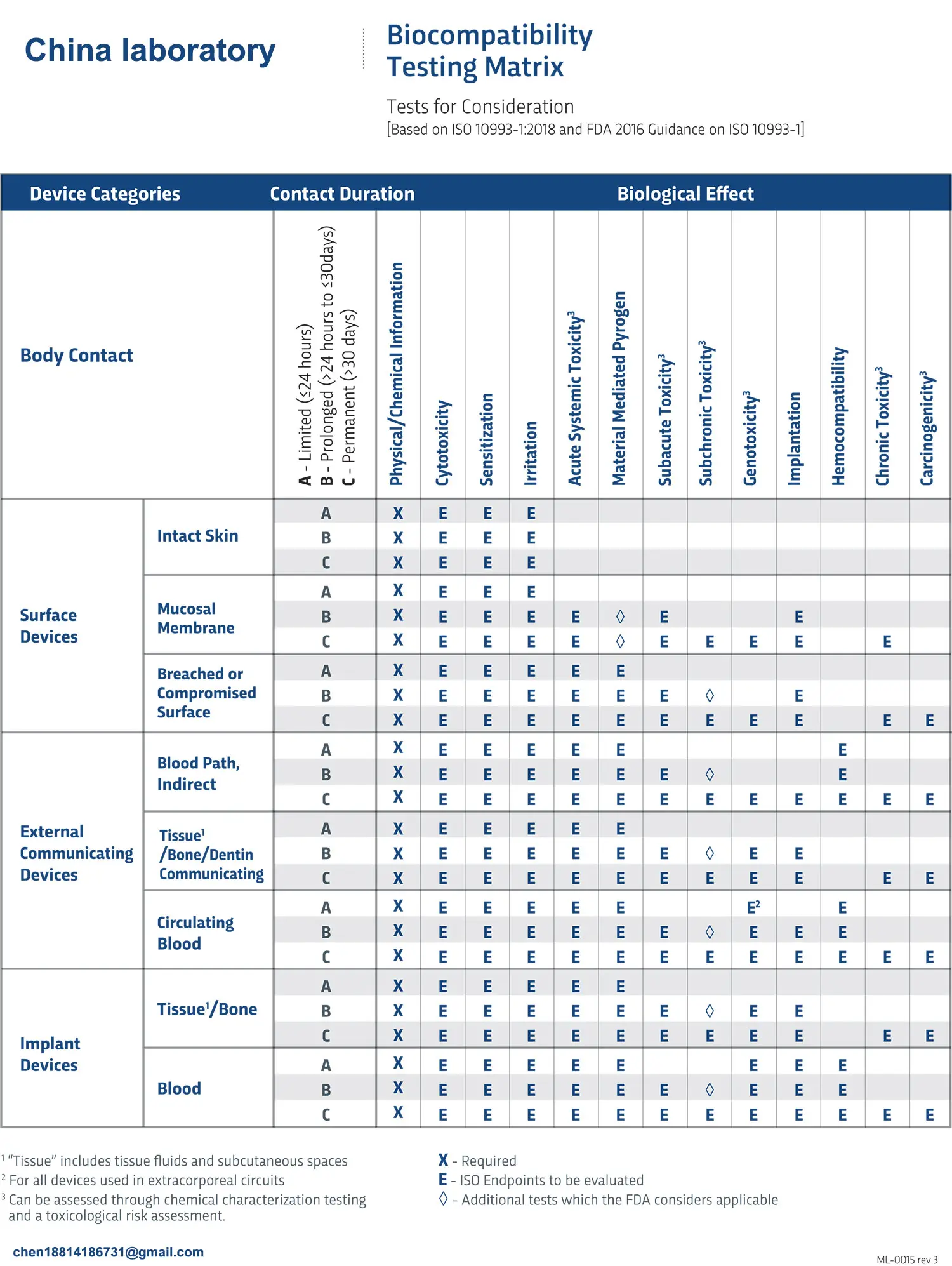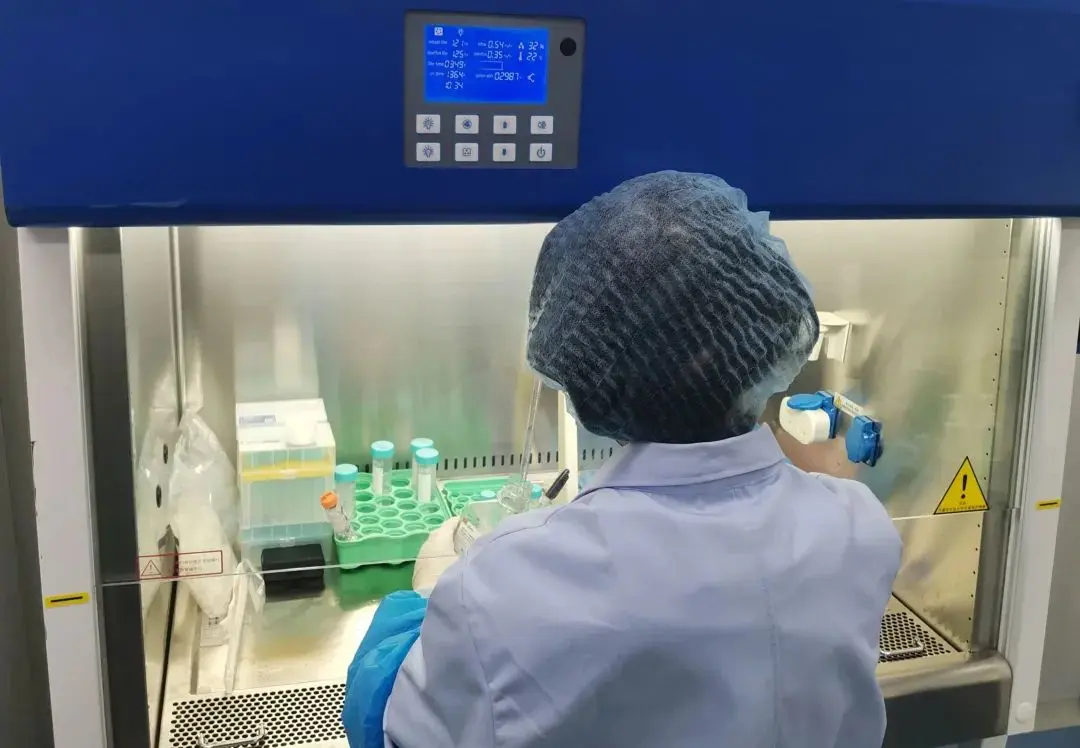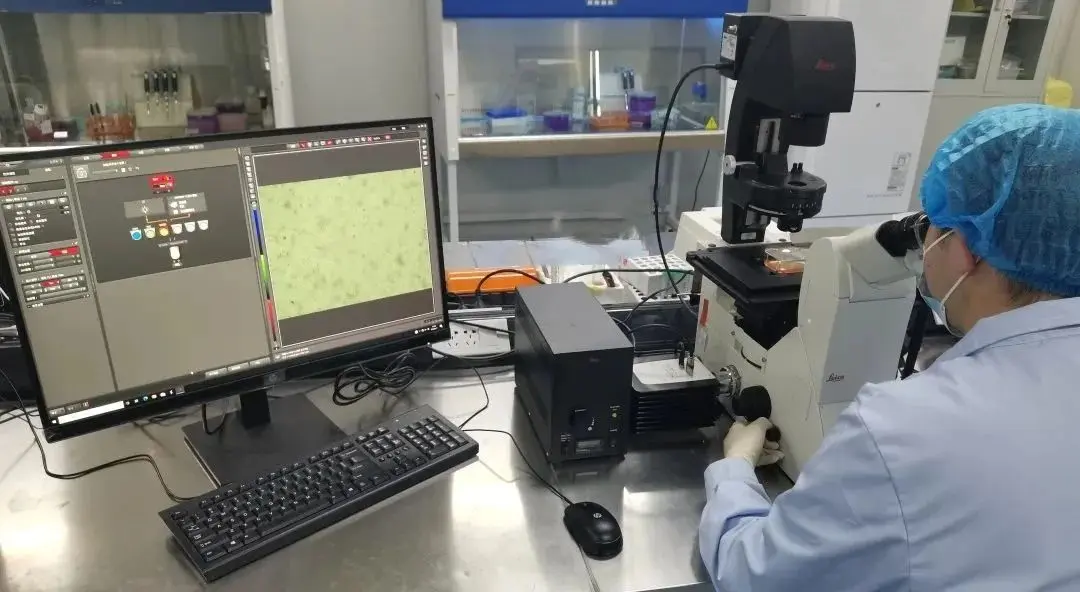
What Biocompatibility Testing is Required for Clinical Trials?
The purpose of biocompatibility testing is to ensure that materials do not release toxic substances when they come into contact with the human body, thereby preventing local or systeMIC cytotoxicity, carcinogenicity, and reproductive toxicity. Additionally, materials shoULd not cause inflammatory reactions, immune responses, toxic reactions, or thrombosis formation upon contact with the human body.

Classification of Medical Devices Based on Risk (FDA Guidelines)
The regulation of medical devices primarily references the US FDA guidelines, classifying devices based on risk levels:
- Class I: Low risk
- Class II: Medium risk
- Class III: High risk
Only Class III and some Class II products require preclinical trials before market release, providing relevant data and literature. Below are the biocompatibility tests requiRED for clinical trials of medical devices:
Biocompatibility Test Items for Medical Devices According to ISO 10993-1:2018
When cells are stimulated by toxic substances, they may exhibit morphological changes, vacuolization, detachment, cell lysis, changes in cell membrane integrity, and even cell death. The MTT assay involves living cells converting yellow MTT into blue formazan crystals within the mitochondrial respiratory chain, detected by absorbance to determine cell viability.
Skin Sensitisation Test
Evaluates if medical devices or substances cause contact allergies and delayed-type hypersensitivity (Type IV). The most sensitive sensitization test involves mixing an adjuvant with the test extract and injecting it intradermally into guinea pigs, observing potential allergenic reactions.
- Test methods: Maximization Sensitisation Test, Closed Patch Test
- Reference standards: iso 10993-10, OECD #406
Skin Irritation Test
Assesses whether medical devices or substance components cause skin irritation. Test substances, either directly or through extracts, are applied to rabbit skin, observing potential irritation.
- Reference standards: iso 10993-23, OECD #404
Intracutaneous Irritation Test
Evaluates whether components of medical devices cause intracutaneous irritation. Extracts of test substances are injected intradermally into rabbits, observing potential irritation.
- Reference standards: ISO 10993-23
Eye Irritation Test
Assesses whether components of medical devices cause ocular irritation. Extracts of test substances are instilled into rabbit eyes, observing potential irritation to the cornea, conjunctiva, and iris.
- Reference standards: ISO 10993-23, OECD #405
Acute Systemic Toxicity Test
Evaluates the potential hazardous effects of medical devices or substances through single short-term exposure to the test animals.
- Reference standards: ISO 10993-11
Pyrogen Test
Assesses whether components of medical devices contain pyrogens. Extracts of test substances are injected into rabbit ear veins, observing changes in body temperature.
- Reference standards: USP 151
Endotoxin Test
Endotoxins, toxins produced by Gram-negative bacteria, are common pyrogens causing febrile reactions. Turbidimetric and chromogenic methods measure endotoxin levels. Turbidimetric reagents cause coagulation in the presence of endotoxins, while chromogenic reagents produce a yellow reaction through Boc-Leu-Gly-Arg-pNA cleavage, calculating concentration using a standard curve.
Implantation Test
Evaluates whether components of medical devices cause local reactions. Test substances are implanted in appropriate locations within rabbit bodies (subcutaneous, muscle, bone), observing clinical physiological conditions and histopathological analysis.
- Reference standards: iso 10993-6


Hemolysis Test
Hemolysis is the release of hemoglobin from damaged or partially damaged red blood cells. In vitro tests assess red blood cell damage:
- Direct contact method: Detects hemolysis caused by physical forces or chemical interactions.
- Extraction method: Detects hemolysis caused by test substance extracts using commercially available hemoglobin detection kits.
Email:hello@jjrlab.com
Write your message here and send it to us
 WEEE Registration for Waste Electrical &Electr
WEEE Registration for Waste Electrical &Electr
 MSDS Chemical Safety Testing
MSDS Chemical Safety Testing
 What Are the Differences Between UK REACH and EU R
What Are the Differences Between UK REACH and EU R
 E-Cigarette GB 41700 Compliance Testing
E-Cigarette GB 41700 Compliance Testing
 What Are the Testing Items of California Propositi
What Are the Testing Items of California Propositi
 E-Cigarette EU TPD Testing
E-Cigarette EU TPD Testing
 Testing Certification for E-cigarettes Exported to
Testing Certification for E-cigarettes Exported to
 What is Amazon US CPC Certification?
What is Amazon US CPC Certification?
Leave us a message
24-hour online customer service at any time to respond, so that you worry!




